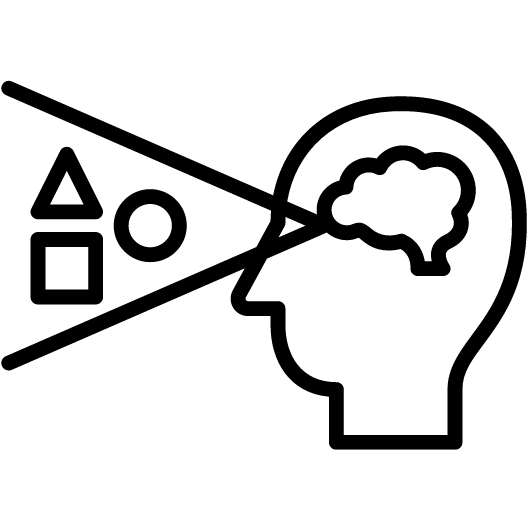Affect
The Basic Idea
Do you have a good poker face? Or are you the type of person who feels a small smirk come over their face and butterflies in their stomach when dealt a good hand of cards? When we try to hide something but end up giving it away through our body language or facial expressions, we are dealing with the power of affect. A key facet of social psychology, affect broadly describes the underlying subjective experience of internal emotions, moods, and feelings when we interact with people, situations, or stimuli.
It is important to note that there is some confusion regarding the definition of affect, as it is both used as an umbrella term to discuss these underlying emotional processes and as a shorthand for affect display. Affect display is the outward physical embodiment of these underlying emotions, such as body language and facial expressions. To return to our poker example, the excitement felt after getting dealt a good hand would be called affect, whereas the small smirk or nervous foot-tapping would be an affect display.
Stimuli do something more than arouse sensation; they give rise to processes of a different kind, to ‘feelings’ in a special sense; we do not merely take the impressions as they come, but we are affected by them, we feel them.
– Edward B. Titchener, English psychologist
Theory, meet practice
TDL is an applied research consultancy. In our work, we leverage the insights of diverse fields—from psychology and economics to machine learning and behavioral data science—to sculpt targeted solutions to nuanced problems.
Key Terms
Affect: A person’s inner emotional state as a result of interacting with their environment. Affect can be either positive, negative, or mixed.
Affect display: The outward physical display of affect. This can be seen in facial expressions, body language, tone of voice, hand gestures, laughter, or tears.
Affect theory: The academic theory which promotes organizing affects into like groups and extrapolating them into describing various phenomena
History
The origins of the study of affect is almost as old as modern psychology itself. Wilhelm Wundt was a mid-19th century German physiologist and psychologist who is known as “the father of experimental psychology” and one of the founding fathers of modern psychology. He attained these lofty titles by opening the first ever experimental psychology lab, which he utilized to examine people’s underlying mental and emotional processes.
At the beginning of his career as a physiologist, Wundt believed that emotions were simply mental reactions to the physical sensations of the body. However, as he developed as a psychologist, he began to believe that there existed some common psychological phenomena, like thoughts, emotions, and beliefs, which were caused by multiple fundamental structures within a person’s psyche. Wundt first coined the term “affect” to describe the momentary feelings and emotions caused by these fundamental structures when a person experiences a sensation, such as smelling a flower, getting a tooth pulled, or listening to music. To put it simply, along with each physiological experience, there is an underlying emotion, feeling, or mood. He posited that affect is a “sixth sense,” which allows us to fully process an experience with emotional value. Wundt believed the idea of underlying affect, to be “primitive” – core to our experience of being human.
People
Wilhelm Wundt
The “father of modern psychology” who first used the term ‘affect’. Wundt is associated with the school of structuralism, which posits that mental processes are made up of fundamental structures.
Silvan Tomkins
In 1962, this American psychologist took the study of affect further, extending it into the broader realm of affect theory. Tomkins regarded affect as an innate biological entity which was subject to social influences, which he attempted to organize into well-defined categories. His work resulted in nine distinct categories of affect, to be used to systematize behavior. The systemized nature of affect theory has allowed for affect to be expanded widely across multiple academic fields, from literature to medicine.
Robert B. Zajonic
Polish American social psychologist, who is known for his broad ranging contributions to a variety of social-cognitive discoveries. One such discovery was his linkage between affect and decision making in 1980. Zanjonic theorized that affect was the primary and constant factor in perception of a stimulus, meaning that we initially perceive everything through an emotional lens, both before and even in spite of other cognitive functions kicking into gear. This discovery laid the groundwork for the affect heuristic.
Consequences
As human beings, our emotions tend to play a dominant role in how we feel, behave, and function in society. Therefore, understanding the benefits and pitfalls of affect is important to help set ourselves up for success.
In our personal lives, a multitude of studies have shown the numerous benefits of maintaining a positive affect Studies have shown that positive affect lowers stress, improves sleep, and increases longevity. Maintaining a positive affect also improves people’s interpersonal lives, as it can increase sociability, helpful behavior, and open-mindedness. Perhaps unsurprisingly, staying in a positive emotional state is also key to living a good life, as positive affect is strongly correlated to life satisfaction, happiness, and well-being.
Beyond the personal benefits, encouraging positive affect has been shown to be helpful in the workplace. A positive affect helps individuals handle emotional information well, problem-solve, and make more effective plans and achieve them. Therefore, fostering positive affect in the workplace can increase feelings of organizational support, which allows employees to discuss their viewpoints more openly and decrease their alienation from the decision-making process. On the other hand, in workplaces that are hostile and ripe with negative emotions, studies have shown increases in workplace deviance and lowered efficiency.
Another area of our lives in which affect plays a key role is decision-making. Often, when making decisions, we use mental shortcuts to speed up the process. One of these shortcuts is the affect heuristic, which occurs when we rely on our emotions to make quick decisions. Because our first response to a situation is often an emotional one as stimuli passes first through our amygdala (the brain structure responsible for emotions), it is easier to rely on emotions to guide our decision making. The affect heuristic alters our perception of risk depending on our affect at the time. If we have a positive affect, we tend to underestimate risk and focus on reward, whereas if we have a negative affect, we generally overestimate risk and disregard reward.
Similarly, inducing a positive or negative affect through advertising, public messaging, and other communications platforms can help drive people to action. For example, deciding whether to use fear or encouragement in your messaging can lead to wildly different results for advertising and public health efforts. Typically, fear based messaging is useful for inducing behaviour in the short run, but is less useful in the long run, whereas positive messaging is potentially less useful in rapidly changing behaviour, but is much more sustainable long term.
Controversies
While affect is incredibly well-researched, there remains criticism regarding the trend of affect theory extending into an array of other academic fields. Critics view the sole use of affect theory as reductive when used to address highly complicated issues in political science or history. For example, one might describe the results of the Cuban Missile Crisis as caused by JFK’s personal affect that day, ignoring the multitude of systemic factors which could also have played a key role. In essence, people are complicated, and attributing the results of a situation purely to an individual’s personal affect, while discounting confounding factors, can be seen as simplistic. Despite this overzealous approach, the psychological validity of affect is rarely questioned.
Related TDL Content
Why COVID-19 Messaging Should Focus on Policy Successes, Not Fear
This article discusses how the emotive language used in COVID-19 messaging should be structured to maintain motivation amongst the populus. While language that promotes a negative affect can provide a good-short term motivator, it does not prove to be a sustainable method, as consistent fear tactics exhaust our mental resources and consistent negative affect requires increasingly intense bad news. Instead, sustaining motivation to adhere to COVID-19 guidelines instead requires language which elicits a positive affect, specifically language that recognizes our own personal agency in defeating this virus.
How Social Norms Complicate Behavioral Research:
As we discussed earlier, our ability to display affect is often constrained by societal norms and patterns of behavior. Often, we act as “social chameleons” based on our situation and surroundings. Read this article to learn more about how social norms guide our behavior and decisions in this world, and how they can confound the effort to study behavioral science.
Sources
- American Psychological Association. (n.d.). APA Dictionary of Psychology. Retrieved March 29, 2021, from https://dictionary.apa.org/affect
- Colman, A. M. (2015). A dictionary of psychology. Oxford: Oxford University Press.
- Tomkins, S. S. (1984). Approaches to emotion. In 1278267912 943316194 K. R. Scherrer (Author), Approaches to emotion. Hilsdale, NJ: Erlbaum.
- Barrett, L. F., & Bliss-Moreau, E. (2009). Affect as a Psychological Primitive. Advances in experimental social psychology, 41, 167–218. https://doi.org/10.1016/S0065-2601(08)00404-8
- See 3
- Zajonc, R. B. (1980). Feeling and thinking: preferences need no inferences. American Psychologist, 35(2), 151–175. https://doi.org/10.1037/0003-066X.35.2.151
- Paterson, T. S., Yeung, S. E., & Thornton, W. L. (2015). Positive affect predicts everyday problem-solving ability in older adults. Aging & Mental Health, 20(8), 871-879. doi:10.1080/13607863.2015.1043619
- Ashby, F. G., Isen, A. M., & Turken, A. U. (1999). A neuropsychological theory of positive affect and its influence on cognition. Psychological Review, 106(3), 529-550. doi:10.1037/0033-295x.106.3.529
- Houben, M., Van Den Noortgate, W., & Kuppens, P. (2015). The relation between short-term emotion dynamics and psychological well-being: A meta-analysis. Psychological Bulletin, 141(4), 901-930. doi:10.1037/a0038822
- Lee, K., & Allen, N. J. (2002). Organizational citizenship behavior and workplace deviance: The role of affect and cognitions. Journal of Applied Psychology, 87(1), 131-142. doi:10.1037/0021-9010.87.1.131
- Soames Job R. F. (1988). Effective and ineffective use of fear in health promotion campaigns. American journal of public health, 78(2), 163–167. https://doi.org/10.2105/ajph.78.2.163
- Leys, R. (2011). The Turn to Affect: A Critique. Critical Inquiry, 37(3), 434-472. doi:10.1086/659353



